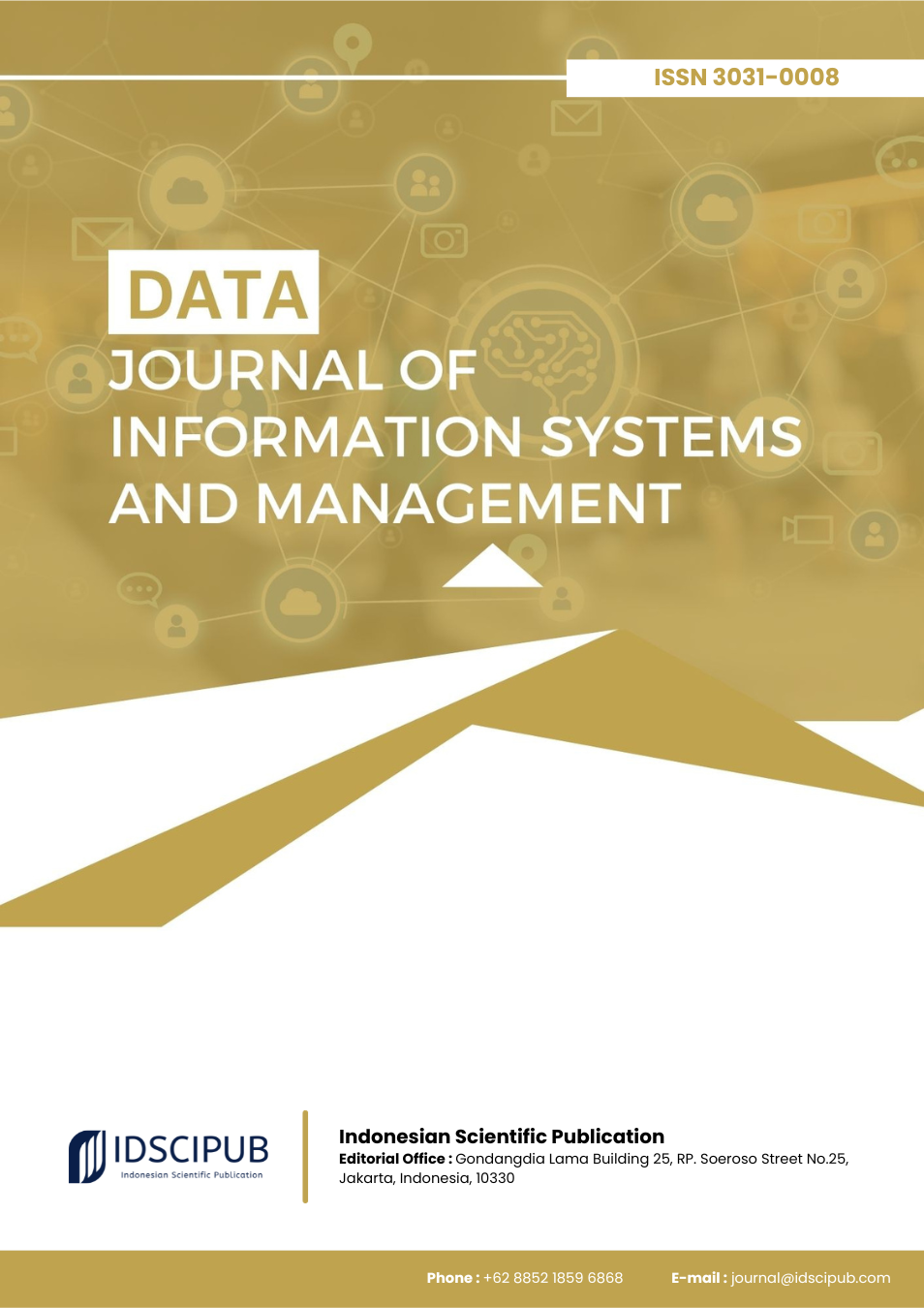Cybersecurity Challenges and Investment in Indonesia
DOI:
https://doi.org/10.61978/data.v2i2.696Keywords:
Cybersecurity, Indonesia, Investment Gaps, Policy Fragmentation, SME Vulnerability, Digital Economy, GovernanceAbstract
Indonesia’s digital economy has expanded rapidly, but this growth has been accompanied by a sharp rise in cyber threats, particularly ransomware and phishing attacks. Despite this, national cybersecurity investment remains critically low, at just 0.02% of GDP—among the lowest in ASEAN. This study analyzes the structural misalignment between the increasing threat landscape and the country’s financial and policy responses. Using secondary data from 2020 to 2023, it examines attack frequencies, regional investment comparisons, and projected market growth. Key results indicate that while cyber incidents have escalated—from 88 million in early 2020 to 347 million in H1 2023—Indonesia's cybersecurity market is projected to grow from USD 1.07 billion in 2024 to USD 3.48 billion in 2030. However, regulatory fragmentation, limited SME readiness, and underdeveloped public-private coordination remain significant barriers. The study concludes that addressing policy fragmentation, increasing investment, and integrating SMEs into the national strategy are essential to secure Indonesia’s digital future and unlock the potential of its growing cybersecurity market.
References
Abdelhamid, M., Kisekka, V., & Samonas, S. (2019). Mitigating e-services avoidance: the role of government cybersecurity preparedness. Information and Computer Security, 27(1), 26–46. https://doi.org/10.1108/ics-02-2018-0024
Abrahams, T., Ewuga, S., Dawodu, S., Adegbite, A., & Hassan, A. (2024). A review of cybersecurity strategies in modern organizations: examining the evolution and effectiveness of cybersecurity measures for data protection. Computer Science & IT Research Journal, 5(1), 1–25. https://doi.org/10.51594/csitrj.v5i1.699
Alazab, M., Awajan, A., Alazzam, H., Wedyan, M., Alshawi, B., & Alturki, R. (2024). A novel IDS with a dynamic access control algorithm to detect and defend intrusion at IoT nodes. Sensors, 24(7), 2188. https://doi.org/10.3390/s24072188
Chicha, M., & Phiri, J. (2024). Factors influencing the adoption of e-marketing in the tourism industry by SMEs in developing countries based on UTAUT model. Open Journal of Business and Management, 12(1), 521–539. https://doi.org/10.4236/ojbm.2024.121032
Dornheim, P., & Zarnekow, R. (2023). Determining cybersecurity culture maturity and deriving verifiable improvement measures. Information and Computer Security, 32(2), 179–196. https://doi.org/10.1108/ics-07-2023-0116
Dutton, W., Creese, S., Shillair, R., & Bada, M. (2019). Cybersecurity capacity: does it matter? Journal of Information Policy, 9, 280–306. https://doi.org/10.5325/jinfopoli.9.2019.0280
Khan, A. (2024). Reconceptualizing policing for cybercrime: perspectives from Singapore. Laws, 13(4), 44. https://doi.org/10.3390/laws13040044
Mphatheni, M., & Maluleke, W. (2022). Cybersecurity as a response to combating cybercrime. International Journal of Research in Business and Social Science (2147-4478), 11(4), 384–396. https://doi.org/10.20525/ijrbs.v11i4.1714
Nguyen, T., Koblandin, K., Suleymanova, S., & Volokh, V. (2021). Effects of ‘digital’ country’s information security on political stability. Journal of Cyber Security and Mobility. https://doi.org/10.13052/jcsm2245-1439.1112
Pekarčík, M., Šafár, L., Rutecka, P., & Morawiec, P. (2024). Unveiling the impact of ownership structure on SMEs’ cybersecurity perceptions. https://doi.org/10.21203/rs.3.rs-4526358/v1
Prawiyogi, A., & Alwiyah, A. (2023). Southeast Asia's cyber security strategy: multilateralism or self-help. IAIC Transactions on Sustainable Digital Innovation (ITSDI), 4(2), 119–127. https://doi.org/10.34306/itsdi.v4i2.581
Saha, S., Hasan, A., Mahmud, A., Ahmed, N., Parvin, N., & Karmakar, H. (2024). Cryptocurrency and financial crimes: a bibliometric analysis and future research agenda. Multidisciplinary Reviews, 7(8), 2024168. https://doi.org/10.31893/multirev.2024168






